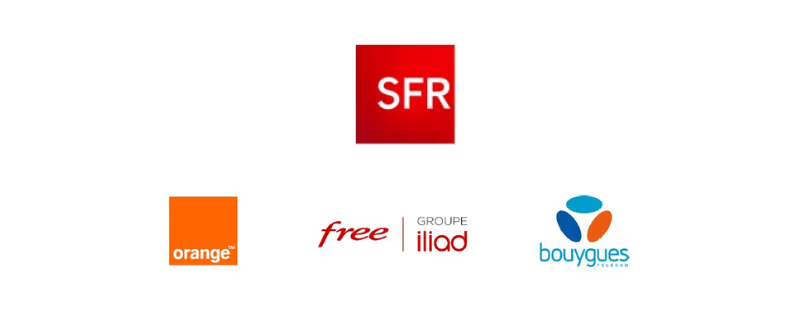
Juniper Research Reveals its Top 10 Telco Trends
Juniper Research unveiled the 10 trends that are set to radically impact the telecommunications landscape in 2024, included in its latest whitepaper. Top 10 Telco Trends for 2024
The whitepaper found that the telco market is poised for major disruption as new technologies, including generative AI, and industry shake-ups, such as Apple’s recent embrace of the RCS messaging standard, force stakeholders to reevaluate long-standing business strategies.
Top 10 Telco Trends 2024 Top 10 Telco Trends for 2024
These trends are:
1. Satellite Launches to Accelerate in 2024, Integrating Terrestrial & Non-terrestrial Cellular Networks
Juniper Research forecasts that there will be over 300,000 connections accessing 5G satellite networks in 2024 with regions such as North America, West Europe, and Far East & China accounting for approximately 80% of all major satellites in operation today; totaling over 8,000 satellites. Additionally, these regions also contain the headquarters of
many of the leading SNOs, including Starlink, Intelsat, Inmarsat, and Sateliot.
Juniper Research anticipates that this increase in satellite launches will cause a surge in the development of compatible services including 5G IoT, 5G mobile broadband, and 5G mobile subscriptions in 2024. Specifically, leveraging satellite-based 5G services will provide a plethora of benefits, including the ability to deliver high-speed Internet connections in
underserved areas, as service carriers consider whether to make 5G more economical in less affluent nations. Additionally, it will also provide an ability to support the drive in demand for higher-yielding service packages to
facilitate the increased use of data-centric use cases in IoT markets.
2. Greater Usage of Open APIs in Telecoms, Driven by Rising SMS Pricing & Fraud
Juniper Research notes that the price of SMS has increased between 50% and 500% across various SMS networks over the last 12 months and as a result, the demand for A2P SMS has begun to plateau. At the same time, open APIs are increasingly gaining traction in the space to enhance connectivity, and communications and develop new services and applications. As open APIs help third-party applications integrate with operator networks, this rise in SMS pricing will lead to a shift in the mobile messaging landscape in 2024 with businesses and developers exploring alternative
communications channels via open APIs, such as Number Verify and SilentAuthentication. Additionally, third-party channels, such as WhatsApp for Business will be an ever-growing threat to operators’ mobile messaging revenue.
To ensure the future of operator revenue, Juniper Research notes that operators will need to keep authentication traffic within the realm of the telecommunications ecosystem. Failure to do so will lead to a decreasing operator revenue in the long term. To do this, brands and enterprises look to Open APIs to supply alternative resources for business messaging
use cases, Juniper Research notes that operators have the ability to increase the value proposition of their services, specifically via authentication services. For example, if operators are not able to reduce prices, then they must look to promote their API-based authentication solutions, such as Number Verify.
3. Generative AI to Revolutionize Conversational AI by Automating Personalized Marketing Campaigns
Since late 2022, conversational AI has gained an immense new level of popular curiosity with the November 2022 launch of OpenAI’s ChatGPT (Generative Pre-trained Transformer). ChatGPT is a chatbot with a generative LLM. The initial language model on release was called GPT-3.5, but the subsequent GPT-4 was released in March 2023.
Since then, generative AI, an emerging technology that automates the generation of new digital content, will be considered a priority in 2024 for conversational AI vendors and will play a key role in LLMs. Specifically, Juniper Research believes that generative AI models will be embedded into LLMs to map entity and sentiment analysis whilst also being able to provide summaries of conversations for enterprises to utilize in future conversations.
There are numerous examples of how the technology can benefit enterprises and conversational AI vendors must look to position themselves as service providers, with solutions underpinned by generative AI integrated into existing portfolios.
4. iSIM-capable Devices to Proliferate in 2024, Driving Global eSIM Adoption
An iSIM (integrated SIM) is a standard that places the functions of a traditional SIM, such as identification and security, directly into the software layer of the device in use, including consumer and IoT devices.
During 2023, there were numerous examples of launches of iSIM platforms and modules, from companies such as Nokia, Kigen and Thales. Over the course of 2024, we expect device vendors in the IoT space to be a key driver of the iSIM standard. IoT use cases are those that will benefit the most from the reduction in form factor enabled by the removal of a physical SIM module.
Juniper Research predicts that there will be more urgency to deploy iSIMs over eSIMs; owing mainly to the complete removal of hardware dedicated to SIM functionality, and its integration into the software layer. For IoT device vendors, this will reduce development and manufacturing times, whilst the ability to use RSP (remote SIM provisioning) will reduce deployment costs for IoT users.
5. EU’s DMA Forces OTT Channels to Develop Cross-platform Capabilities, with Apple Supporting RCS in Response
In September 2023, the EU designated six digital gatekeepers, in accordance with the new regulations on big tech introduced by the DMA (Digital Markets Act). These gatekeepers include Apple, Meta, and Microsoft, affecting 22 communication platforms, including WhatsApp, and Messenger. A significant impact of this legislation is the creation of an obligation for gatekeepers to provide third-party interoperability within the OTT messaging ecosystem, including apps such as WhatsApp and Messenger. Meta has already begun to develop this feature, with interoperability needing to be supported by March 2024 in order to comply with these new EU regulations.
OTT channels will be under intense pressure to develop these cross-platform capabilities in 2024, as these platforms will face fines as high as 10% of global turnover, with the potential to rise to 20% for repeat offenses if regulations are not complied with by March 2024. In response to the legislation, WhatsApp has begun to develop an interoperable chat feature, that will enable users to communicate across OTT messenger apps.
6. 5G Data Roaming Traffic to Necessitate Acceleration of BCE 2.0 Protocol Adoption
Despite the GSMA’s BCE (Billing and Charging Evolution) being announced in 2019, fewer than 100 operators leverage the protocol’s benefits, with the vast majority opting to continue to depend on TAP (Transferred Account Procedure). There are a number of reasons for this slow uptake, ranging from uncertainty over BCE 2.0, and the high investment costs associated with supporting the protocol.
However, with BCE 2.0 expected to become operational in July 2024, Juniper Research expects the uptake of BCE to gather significant momentum. Instrumental in driving adoption will be the ever-increasing number of 5G roaming connections, with Juniper Research predicting that the total number of 5G roaming connections will rise from 35 million in 2023 to 77 million by the end of 2024; demonstrating a growth of 220% over the next 12 months.
This growth in 5G roaming traffic will drive the adoption of BCE 2.0 in 2024, as it will exacerbate operator revenue leakage caused by TAP, which is ineffective for 5G monetization. TAP results in revenue leakage as operators are limited in the volumes of data they can exchange in TAP files, a major issue when using the protocol for 5G connections, which produce vast amounts of data per connection.
Moreover, as 5G roaming traffic continues to increase in 2024, operators will face growing consequences for not adopting the BCE protocol. Most significantly, operators will be unable to maximize revenue from enterprises’ 5G roaming traffic, as the flexibility of BCE enables operators to deploy new charging models, that apply premium charges against 5G roaming traffic. Top 10 Telco Trends for 2024
Specifically, BCE will enable operators to apply differential pricing for roaming access to different network slices on 5G standalone networks. These network slices will have different KPIs for quality of service, such as latency, allowing enterprises to optimize their purchases of roaming access for their needs.
7. Sustainable Initiatives to Be Prioritised to Reduce the Impact of Telco Supply Chains
Sustainability has become a key priority for network operators. Initiatives such as The European Green Deal, and the Circular Economy Action Plan from the EU, as well as the Ecodesign for Sustainable Products Regulation, are driving operators to place ESG (Environmental, Social and Governmental) initiatives at the forefront of planning.
With the launch of 4G and 5G technologies, network virtualization has played a key role in operators’ sustainability strategies. By reducing the reliance on hardware, operational costs can be reduced, as well as lowering transport costs.
However, in 2024, Juniper Research expects operators to focus on new initiatives that look to reduce the impact of telecommunications on the environment as they seek diminished returns on implementing more virtualization in networks that reduce carbon footprint.
8. Large Language Models to Lower Entry Barrier for Voicebot Implementation
Despite enterprises leveraging mobile messaging channels as part of their business communications strategy, Juniper Research anticipates that voice will remain a core service for enterprise communications over the next five years. Specifically, voice calls in contact centers and the rise of voice assistants such as Alexa, necessitated chatbot vendors to expand their services to include voice bots. Top 10 Telco Trends for 2024
However, in order to maintain its relevance in established markets, voice services must continue to evolve; improving not only the quality of services but also the flexibility afforded to enterprises. With the support of open API initiatives including the GSMA Open Gateway launched in 2023, Juniper Research predicts that in 2024, LLMs (Large Language Models) and generative AI will revolutionize the capabilities of voice bots across industries such as banking, eCommerce, retail, and insurance. Specifically, these AI models will not only improve the personalization of services such as recommendations, transactions and customer support, but also ensure a quickening in response time, thus improving business efficiency.
9. 5G Advanced Networks to Enable New Mobility & XR Markets
5G Advanced represents a forthcoming evolution in 5G which will empower a diverse new range of industry verticals, such as mobility and XR (Extended Reality). Notably, as an evolution of the technology, it will be backward compatible; leading to swift implementation timelines for operators and mobile subscribers. The new 5G standard aligns with specifications in release 18 from the 3GPP (3rd Generation Partnership Project; reducing the complexity of network processes and increasing power efficiency. The release will standardize the use of AI and machine learning to automate
network orchestration, especially in the context of the performance of the RAN (Radio Access Network) functions.
5G Advanced, which is anticipated to launch in 2024, will have significant benefits to the entertainment and education sectors, by providing support for more interactive application use cases. Operators must capitalize on this rise of new use cases by supporting business models that leverage APIs for service access. The launch of the GSMA’s Open Gateway in 2023 will act as the ideal platform to develop homogeneous APIs that can be implemented across multiple networks.
 10. Network-wide AI Implementation to Increase Efficiency of Functions, as 6G Approaches
10. Network-wide AI Implementation to Increase Efficiency of Functions, as 6G Approaches
Operators have readily implemented AI in various elements of their network architecture; however, we expect network-wide AI implementation to come to the fore in 2024. This will include AI services that can access data from the entirety of the network, from the core to edge nodes, rather than in isolation.
This will enable operators to further optimize their network operations, including predictive maintenance and security. At a time when operators are faced with declining ARPC, minimizing network operational expenditure is key. With network functions becoming increasingly virtualized, the impact of AI on networks has never been greater. The focus on 5G standalone networks, as well as the impending focus on future 6G networks, is driving this focus on AI implementation. Whilst a reduction in capital expenditure is the key motivational aspect for its implementation, the benefits it can provide to mobile subscribers and IoT users cannot be understated.
Find out the key details you need to know by downloading Juniper Research’s free whitepaper.
Juniper Research’s VP of Telecoms Market Research, Sam Barker, commented: “The telecommunications industry has seen rapid digital innovation over the last decade, driven by advances that greatly improve the efficiency with which new telecommunications services can be launched. Over the coming year, we expect operators to capitalise on this efficiency and make bold moves to better position themselves amidst the major technological and business shakeups on the horizon.”
Behind the Top Trends Top 10 Telco Trends for 2024
These trends were compiled by Juniper Research’s expert team of telecoms market analysts, cross-referencing their detailed industry knowledge against the online data platform harvest, comprising 1.8 million telco market statistics. Through this, industry stakeholders can navigate the ever-evolving telecommunications landscape and unlock advantages through intelligence.












